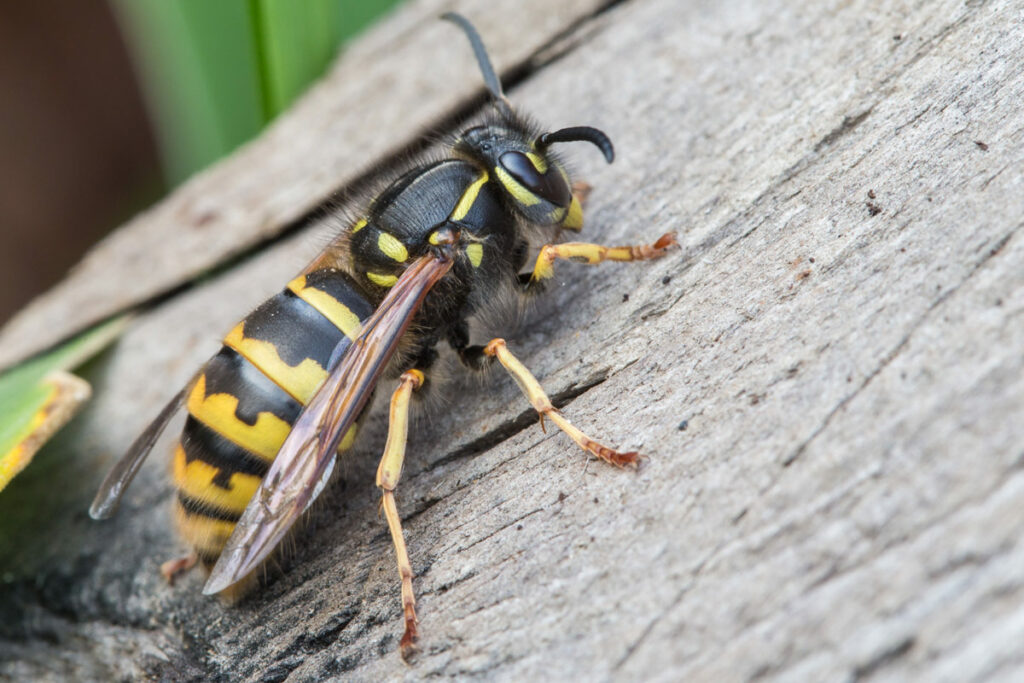Wasps and Hornets are some of the smallest yet most feared creatures around. They can be annoying, and just downright painful if you endure their sting. If you have discovered a nest of wasps or hornets, Abra Kadabra Environmental Services is here to help. We are a family owned pest removal company that can help you keep your home and your family safe from common pests.
When dealing with wasps and hornets, it’s useful if you can accurately identify the species. Wasps and Hornets are typically easy to identify, however, if you have a nest around your home, doing some research on these insects can be beneficial and help prevent you or your family members from getting stung.
Let’s take a closer look at wasps and hornets so that you can accurately identify what you are dealing with when you give us a call here at Abra Kadabra Environmental Services.
Wasps & Hornets: Identification & Sting Prevention
Wasps and hornets will create their nests around your home during the summer. These insects will usually only attack if provoked, but it doesn’t take much to provoke them. Aside from their painful stings and large unsightly nests, wasps and hornets can be deadly if a person who is allergic to their venom is stung.
If you have a problem with wasps or hornets invading your space, you should get in contact with us here at Abra Kadabra Environmental Services so that we can help eliminate the problem. In the meantime, here is some more information on these two common insects.
Wasp & Hornet Information
There are several different species of wasps and hornets. Here are some details on how to identify each one.
Paper Wasps
Paper wasps construct only one comb. The shape of their nests will be in an umbrella shape, and they will typically build their nests on horizontal beams.
Yellowjackets & Bald Faced Hornets
Yellowjackets and Bald Faced Hornets will capture other insects, spiders, and arthropods and feed them to their young. The adults will feed primarily on sources of sugar like juices and ripening or overripe fruit. They also feed on the nectar of flowers.
Identifying Wasp & Hornet Nests
Wasps and Hornets will make nests from chewed up papery wood fibers mixed with saliva. The nests are usually combs that are surrounded by several layers. The Yellowjackets will build their nests below ground, in cavities, or in old rodent burrows. They can also build in hollow logs, landscaping timbers and buildings inside of wall voids or attics. Wasps and Hornets will only use their nests for one season.
Life Cycle of Wasps & Hornets
All bees and wasps have a complete life cycle that includes the common four stages, egg, larva, pupa, and adult. Colonies that only survive for one year are known as an annual colony.
Queens are the only members of a colony that can survive during the winter season. All newly produced or mated queens will leave their old nests and search for new, protected sites during the winter. They may search for a new home under loose bark, rotten stumps, or under the siding of your house.
Throughout the spring and summer months (such as April and May), bee activity will increase, and the queen will find a new place to start her nest from scratch. She will lay eggs and raise worker bees. These nests can occur with either one or multiple queens.
By late summer, new queen bees are produced. The colonies will begin to decline as the queens stop laying eggs. Nests may remain active until freezing temperatures start in the early winter.
Preventing Wasp & Hornet Infestations
The best way to prevent wasps and hornets is to minimize actions that attract them.
-
- When barbecuing outdoors or having a picnic, always wait to serve food and drinks when people are ready to eat.
- Put away food when you are done eating and throw trash into a container with a tight-fitting lid.
- Always look into your glasses, cans, and other containers before drinking from them. Check for yellowjackets that may have flown inside. If a Yellowjacket flies into your food, wait for it to fly away or gently brush it away.
- If only a few Yellowjackets are interfering with your work or play, ignoring them or capturing them with a net and squashing them may work.
- Store bought traps may catch several wasps, but it won’t be enough to reduce their activity. Especially if a nest is nearby.
Trusted Wasp & Hornet Prevention Company
To learn more about Wasp and Hornet prevention and extermination, contact the professionals at Abra Kadabra Environmental Services at (763) 537-0330. Our experts will be happy to answer any questions you have.

